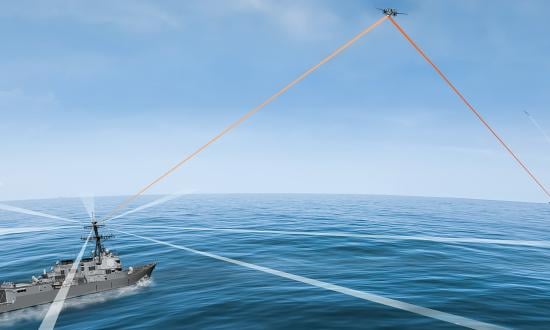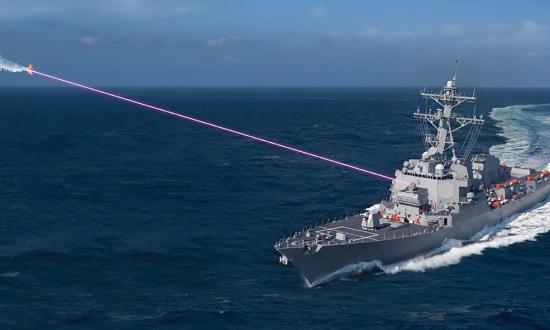The Navy plans in the coming months to award a contract for development of a surface combatant software factory intended to reshape the way the Navy and its industry partners develop software programs and to serve as the foundation of a fleetwide digital transformation strategy.
Earlier this year, the Navy established what it calls a “software factory ecosystem”—dubbed “the Forge”—in suburban Maryland, a physical site for an effort that also will be virtual, engaging numerous contractors, including many smaller commercial vendors.
Ludwig Tokatlian, manager of advanced technology, mission systems, for Northrop Grumman’s maritime sensors and systems division, says that the effort is both a “natural growth of what the Navy’s trying to do, but also a response to near-peer adversaries, which can integrate technologies faster than how we respond.”
The goal, he says, is to “increase the cadence by which software is developed and get the operator involved in the process.” The initiative also can be seen as an extension of the Navy’s common software library, managed by Lockheed Martin.
The software factory initiative, led by the Program Executive Office for Integrated Warfare Systems (PEO/IWS), draws on multiple DoD initiatives to promote collaboration with industry for fielding critical operational software. The PEO’s strategy, Tokatlian says, is to bring operators into the development process to provide developers greater insight into requirements, eliminate programmatic delays, and build software that precisely meets operational requirements—that is, to “improve quality and increase user acceptance.”
Tokatlian points out that Northrop Grumman plays key roles in several DoD and Air Force initiatives focused on the principles of continuous integration and continuous development for operational software. The new approach, called DevSecOps, is spelled out in an August 2019 DoD document, which stipulates that development be based on “agile principles” and be integrated with security and operational requirements.
He says the Navy hopes to build fleet involvement as developers write combat systems software through a “build a little, test a little” approach. Operators are to provide feedback used in a “sprint” phase—as little as two to three weeks. Developers will make adjustments and changes based on the feedback, leading to higher quality and user acceptability.
Tokatlian says the Navy effort emulates an Air Force digital transformation initiative managed at the Air Force’s Life Cycle Management Center Detachment 12, better known as Kessel Run, set up in Boston in March 2017. The Kessel Run operation led to a program called Platform One, sponsored by the Air Force and Cyber Command and supported by Northrop Grumman. Kessel Run, Tokatlian says, became a precursor to the Navy’s Forge.
Northrop Grumman won a contract in late 2019 to act as system coordinator for a related Cyber Command effort called United Platform (UP). The company, through the UP vehicle, develops cyber capabilities for Cyber Command and the Air Force under a 2020 basic ordering agreement.
The Forge will be supported by the Consortium Management Group (CMG), a nonprofit organization of companies that can be employed through a single acquisition instrument, which in this case will be a Navy other transaction authority (OTA).
According to Tokatlian, the OTA will enable the Navy to seek the expertise of thousands of commercial companies instead of relying on its stable of large defense contractors. A department within CMG, the Consortium for Command, Control, and Communications in Cyberspace, will coordinate the program.
For the software factory effort, PEO/IWS sought responses to white papers from multiple contractors and in March conducted an initial downselect. A decision on release of a request for proposals is planned for sometime this year.






